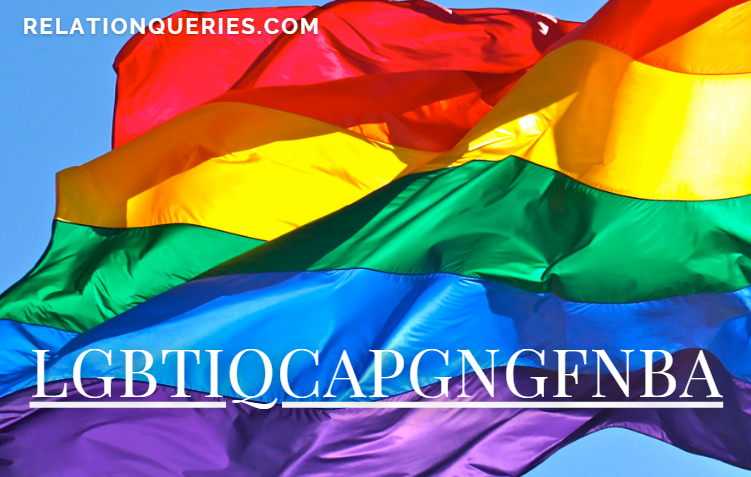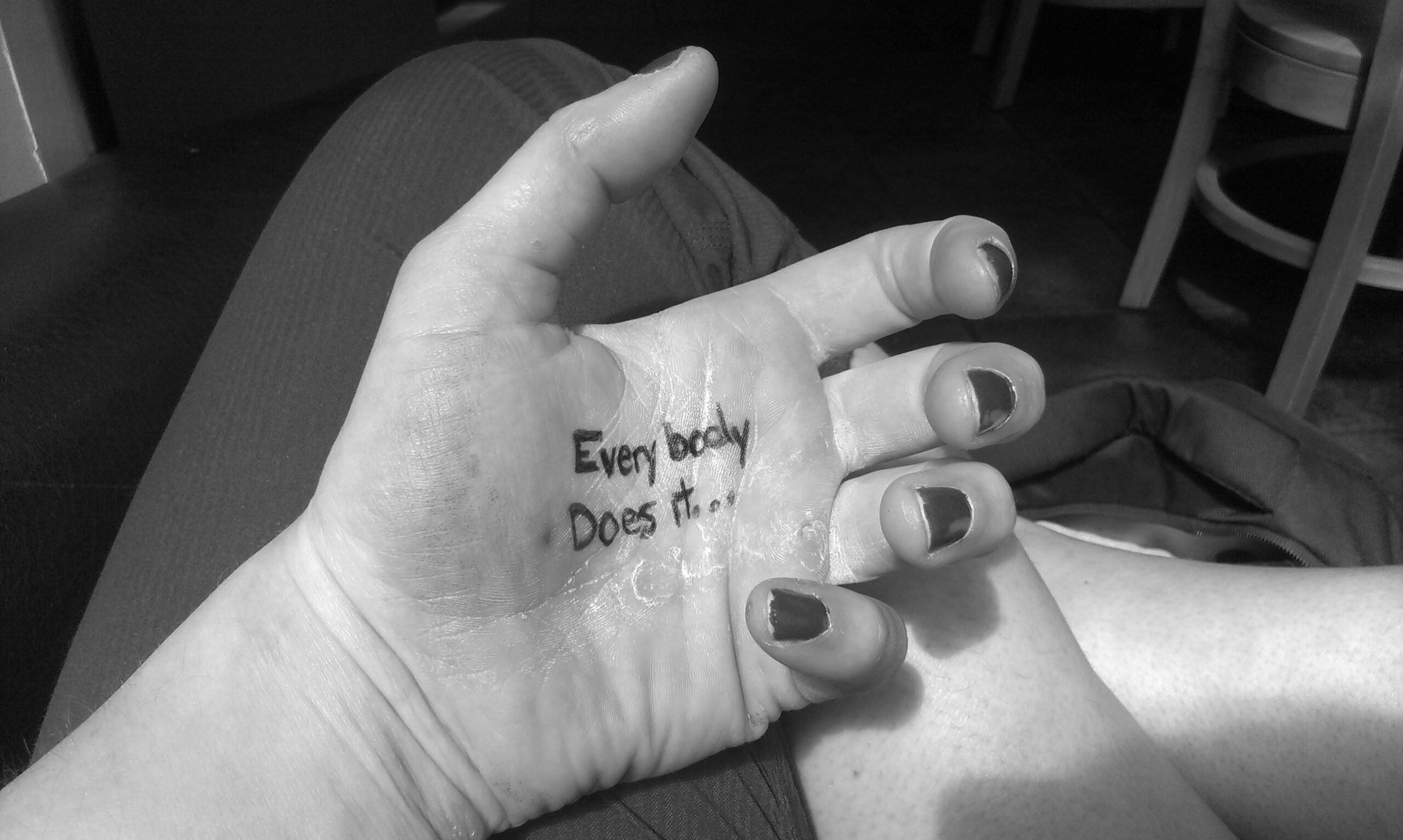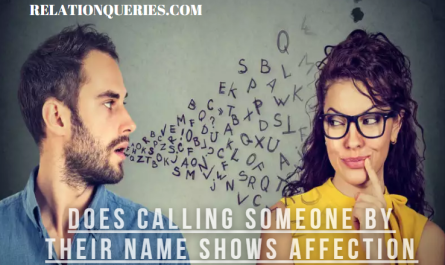LGBTIQCAPGNGFNBA: In recent years, conversations about gender and sexual identities have expanded beyond the binary notions that once dominated mainstream understanding.
The LGBTIQCAPGNGFNBA acronym represents a rich tapestry of identities that encompass a wide range of human experiences and expressions.
From the traditional LGBT (Lesbian, Gay, Bisexual, and Transgender) to the more intricate and evolving terms, such as CAPGNGFNBA (Curious, Asexual, Pansexual, Genderqueer, Non-binary, Fluid, Neutrois, Bigender, Androgynous), our society is finally acknowledging and respecting the vast spectrum of human gender and sexual diversity.
This article aims to explore and shed light on these identities, their historical context, the challenges faced by individuals within these communities, and the importance of inclusivity and acceptance.

Defining The LGBTIQCAPGNGFNBA Acronym
The acronym “LGBTIQCAPGNGFNBA” stands for Lesbian, Gay, Bisexual, Transgender, Intersex, Queer, Curious, Asexual, Pansexual, Gender-Nonconforming, Genderfluid, Nonbinary, and Bisexual-Aromantic.
Each letter in the acronym represents a unique facet of gender and sexual identity, each with its own distinct experiences, struggles, and contributions.
1. Lesbian:
A lesbian is a woman who is romantically, emotionally, and/or sexually attracted to other women.
The term has historical origins in ancient Greece but gained modern significance as a way to describe a specific form of same-sex attraction. Lesbian identity has evolved over time, often facing challenges of societal invisibility and discrimination.
Today, lesbians are part of a diverse community that advocates for visibility, acceptance, and equal rights.
2. Gay:
“Gay” refers to individuals who are attracted romantically, emotionally, and/or sexually to people of the same sex. Originally meaning “happy,” the term evolved to describe homosexuality.
Gay identity has historical roots in activism, with challenges including stigma and discrimination. Today, the gay community advocates for equality and visibility, contributing to positive societal change.
3. Bisexual:
“Bisexual” refers to individuals who are attracted romantically, emotionally, and/or sexually to people of their own gender and other genders.
This term acknowledges attraction across a spectrum, challenging binary concepts of sexuality. Bisexual identity has evolved to embrace fluidity and diverse attractions.
While stereotypes persist, the bisexual community advocates for understanding and acceptance of their unique experiences.
4. Transgender:
“Transgender” refers to individuals whose gender identity differs from the sex they were assigned at birth. This term represents a diverse group of people who navigate a journey of self-discovery and authenticity.
Transgender individuals may undergo social, medical, or legal transitions to align their external appearance with their internal sense of self.
The transgender community works toward recognition, acceptance, and equal rights while raising awareness about the challenges they face.
5. Intersex:
“Intersex” refers to individuals born with physical, genetic, or hormonal variations that don’t align with typical definitions of male or female. This term recognizes the diversity of human biology and challenges the binary concept of sex.
Intersex people may face medical interventions and societal pressures, highlighting the importance of awareness, respect, and understanding of their unique experiences.
6. Queer:
“Queer” is an inclusive term that encompasses a wide range of gender and sexual identities beyond heteronormative norms.
Originally used as a derogatory term, it has been reclaimed by the LGBTQ+ community to celebrate non-conformity. Queer individuals may identify as lesbian, gay, bisexual, transgender, or other identities.
The term reflects the complexity and diversity of human experiences, challenging traditional labels and promoting inclusivity.
7. Asexual:
“Asexual” refers to individuals who experience little or no sexual attraction to others. This term recognizes that not everyone feels the same level of sexual desire. Asexual people may still have romantic, emotional, and aesthetic attractions.
Asexual identity challenges societal norms around sexuality and highlights the importance of understanding and respecting diverse experiences within the broader spectrum of human interest.
8. Pansexual:
“Pansexual” describes individuals who are attracted to people regardless of their gender identity or expression. This term goes beyond traditional gender boundaries and focuses on emotional and personal connections.
Pansexual individuals are open to various gender identities, recognizing the fluidity of attraction. This identity emphasizes the importance of looking beyond traditional labels and embracing the diversity of human experiences.
9. Genderqueer:
“Genderqueer” refers to individuals whose gender identity doesn’t conform to traditional binary concepts of male or female. This term acknowledges the complexity and diversity of gender experiences.
Genderqueer individuals may identify as a mix of genders, neither gender nor as a different gender entirely. This identity challenges societal expectations and encourages a more inclusive understanding of gender beyond rigid categories.
Related Article: When A Daughter Hurts Her Mother
10. Non-binary:
“Non-binary” refers to individuals whose gender identity doesn’t exclusively fit within the categories of male or female. This term recognizes that gender exists on a spectrum beyond traditional binary notions.
Non-binary people may identify as a combination of genders, neither gender nor a different gender altogether. This identity challenges societal expectations and emphasizes the importance of validating diverse gender experiences.
11. Fluid:
“Fluid” refers to individuals whose gender identity is not fixed and may change over time. This term recognizes the flexibility and evolving nature of one’s sense of self in relation to gender.
Gender-fluid individuals may experience shifts in how they perceive and express their gender, breaking away from static definitions.
This identity highlights the complexity of gender and encourages understanding and acceptance of these fluctuations.
12. Neutrois:
“Neutrois” refers to individuals who identify with a neutral or null gender, often feeling a disconnect from the binary concepts of male and female.
This term reflects a gender identity that doesn’t align with traditional categories. Neutrois individuals may experience a sense of being gender-neutral or having a gender that doesn’t fit within conventional definitions.
This identity challenges societal norms and contributes to a broader understanding of gender diversity.
13. Bigender:
“Bigender” refers to individuals who identify with two distinct gender identities, either simultaneously or at different times. This term acknowledges that gender can be multifaceted and not limited to a single category.
Bigender individuals may fluidly move between their two identities or experience them simultaneously. This identity challenges binary notions of gender and emphasizes the complexity of personal gender experiences.
14. Androgynous:
“Androgynous” describes individuals who express both male and female gender characteristics or present themselves in a way that defies traditional gender norms.
This term highlights the fluidity of gender expression and challenges societal expectations. Androgynous individuals may intentionally blend aspects of both genders or present themselves in a way that reflects their unique identity.
This identity emphasizes the freedom to express oneself beyond conventional gender boundaries.
Concepts Within The LGBTIQCAPGNGFNBA
One of the fundamental concepts within the LGBTIQCAPGNGFNBA framework is the idea of fluidity.
Many individuals within this community do not fit neatly into a single category and may experience shifts in their identity over time.
This fluidity challenges societal norms and encourages a more open-minded perspective.
The Evolution of LGBTQ+ to LGBTIQCAPGNGFNBA
The expansion of the LGBTQ+ acronym to LGBTIQCAPGNGFNBA reflects an ongoing commitment to inclusivity. As language evolves, so too does our understanding of identity.
This expanded acronym recognizes identities that have historically been overlooked or misunderstood.
Acknowledging Intersectionality Within The LGBTIQCAPGNGFNBA
Intersectionality is a fundamental principle within the LGBTIQCAPGNGFNBA framework.
People’s identities are complex and interconnected, influenced by factors such as race, ethnicity, disability, and socioeconomic background.
Recognizing these intersections is crucial for promoting true inclusivity.
Breaking Down Each Letter
Lesbian and Bisexual Identities
Lesbian and bisexual individuals experience attraction to people of the same and different genders, respectively. These identities challenge the binary concept of sexual orientation.
Transgender and Genderqueer Identities
Transgender individuals have a gender identity that differs from their assigned sex at birth. Genderqueer individuals reject traditional gender norms and embrace a more fluid sense of self.
Intersex and Asexual Identities
Intersex individuals are born with biological characteristics that don’t fit typical definitions of male or female. Asexual individuals experience little to no sexual attraction, highlighting the diversity of the human experience.
Pansexual and Gender-Nonconforming Identities
Pansexuality transcends gender, focusing on emotional and intellectual connections. Gender-nonconforming individuals express their gender in ways that challenge societal norms.
Nonbinary and Two-Spirit Identities
Nonbinary individuals don’t exclusively identify as male or female, occupying a unique space on the gender spectrum. Two-Spirit is a term used by some Indigenous cultures to describe a person embodying both masculine and feminine qualities.
Bisexual and Aromantic Identities
Bisexual individuals are attracted to people of their own gender and other genders. Aromantic individuals experience little to no romantic attraction, further highlighting the diverse ways people relate to one another.
Navigating Challenges and Discrimination
Health Disparities and Mental Health
LGBTIQCAPGNGFNBA individuals often face health disparities and barriers to healthcare. Discrimination and lack of understanding contribute to higher rates of mental health challenges within this community.
Legal and Social Hurdles
Legal recognition of LGBTIQCAPGNGFNBA rights varies across different regions. Social stigma and discrimination continue to pose obstacles to equality and acceptance.
The Importance of Visibility and Representation
Media and Pop Culture
Representation in media plays a crucial role in shaping societal perceptions. Increasingly, diverse LGBTIQCAPGNGFNBA characters and narratives are being featured, helping to break down stereotypes.
Celebrating Role Models
Prominent individuals within the LGBTIQCAPGNGFNBA community serve as role models, inspiring others to embrace their identities and advocate for change.
Building Inclusive Communities
Supportive Educational Initiatives
Educational institutions play a vital role in fostering understanding and acceptance. Inclusive curricula and support systems contribute to safer and more supportive environments for LGBTIQCAPGNGFNBA youth.
Safe Spaces and Resources
Creating safe spaces for LGBTIQCAPGNGFNBA individuals to connect and seek support is essential. Providing resources for mental health, legal assistance, and community engagement can make a significant difference.
The Power of Acceptance and Allies
Advocacy and Solidarity
Advocacy efforts are integral to advancing LGBTIQCAPGNGFNBA rights. Allies who stand in solidarity contribute to breaking down barriers and challenging prejudice.
Amplifying Marginalized Voices
Within the LGBTIQCAPGNGFNBA community, confident voices are more marginalized than others. Amplifying these voices ensures that a wide range of experiences is acknowledged and addressed.
Conclusion
The evolution from LGBTQ+ to LGBTIQCAPGNGFNBA underscores the ever-expanding landscape of gender and sexual identities. Embracing this diversity requires open hearts and open minds.
By understanding and respecting the rich tapestry of identities within the LGBTIQCAPGNGFNBA community, we move closer to a world where everyone can live authentically.



